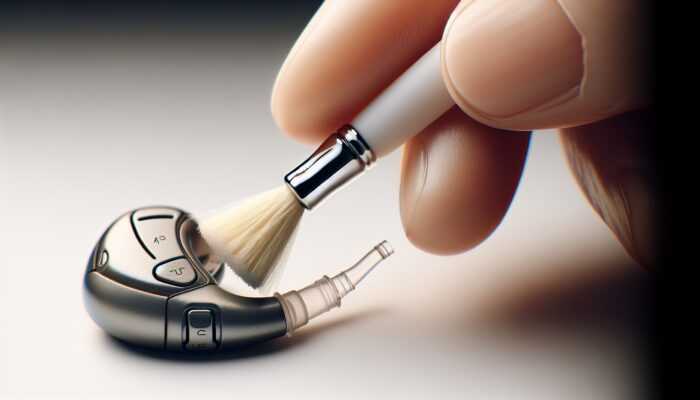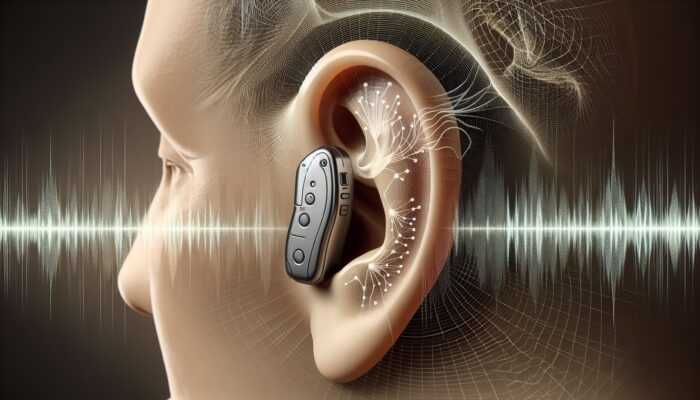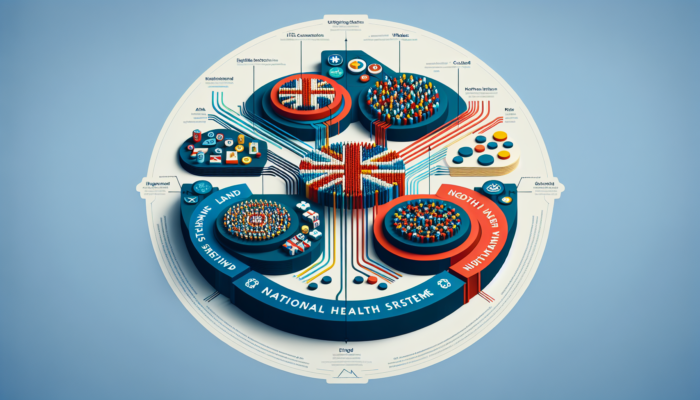Understanding the Key Causes of Inner Ear-Related Vertigo
Identifying Vestibular Disorders and Their Impact
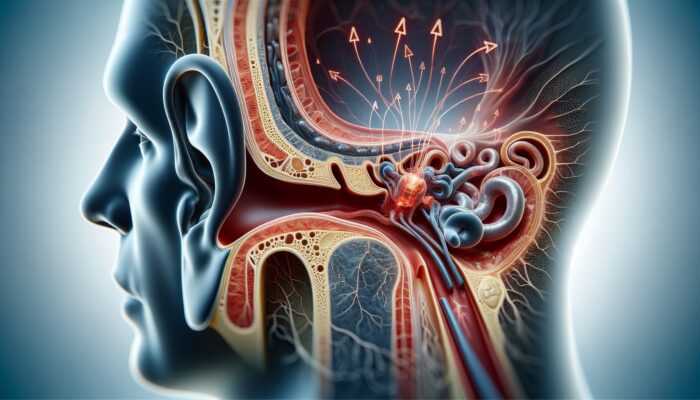
Vestibular disorders encompass a broad range of conditions that can significantly contribute to the sensation of vertigo, primarily through disruptions in the inner ear’s balance system. A notable example is Meniere’s disease, a complex condition marked by recurrent episodes of vertigo, tinnitus (a persistent ringing in the ears), and varying degrees of hearing loss. While the specific etiology of Meniere’s disease is not entirely understood, it is generally attributed to an abnormal buildup of fluid in the inner ear, which disrupts both auditory and balance functions.
Environmental factors, such as living in regions with high humidity or frequent weather fluctuations, can exacerbate the symptoms associated with these disorders. For instance, locations like Mumbai and Bangkok experience tropical climates that may heighten the severity of vestibular disorders due to atmospheric pressure changes impacting fluid dynamics within the inner ear. A deeper understanding of these diverse causes underscores the necessity for specialized medical care, particularly in areas where such conditions are particularly prevalent.
Additionally, other vestibular disorders such as vestibular migraine complicate diagnosis, as they often present symptoms akin to those of traditional migraines, but with the added dimension of dizziness and balance disturbances. A comprehensive understanding of how these conditions affect individuals globally is crucial, considering the cultural differences in health perceptions and the availability of medical interventions.
Exploring Benign Paroxysmal Positional Vertigo (BPPV)
Benign Paroxysmal Positional Vertigo (BPPV) stands as one of the most prevalent causes of vertigo, arising from a specific condition that involves the displacement of tiny calcium carbonate crystals, referred to as otoconia, within the inner ear. When these crystals become dislodged, they can migrate into the semicircular canals, leading to intense, albeit brief, episodes of vertigo, particularly when the head is tilted or moved in certain positions.
Individuals suffering from BPPV often describe sudden sensations of spinning or the feeling that their surroundings are moving, which can be disorienting and disrupt daily routines significantly. Although BPPV can affect anyone, it is especially prevalent among older adults, particularly those over the age of 60, and may be triggered by head trauma or prolonged periods of bed rest.
Raising global awareness about BPPV is critical, especially in areas where access to medical diagnostics is limited. For example, in rural regions of countries like India or Brazil, the scarcity of specialists trained in diagnosing and treating BPPV can lead to misdiagnosis or inadequate care. Effective management often includes a series of repositioning maneuvers, such as the Epley maneuver, which can be taught to patients and caregivers, making it a manageable condition worldwide.
Understanding Labyrinthitis and Vestibular Neuritis
Labyrinthitis and vestibular neuritis are two inflammatory conditions that impact the inner ear, leading to symptoms of vertigo and other auditory disturbances. Labyrinthitis refers to the inflammation of both the cochlea and the vestibular system, frequently following a viral infection, such as a common cold or the flu. This inflammation can lead to vertigo, hearing impairment, and even tinnitus, creating a challenging experience for affected individuals.
In contrast, vestibular neuritis specifically affects the vestibular nerve, resulting in severe dizziness and balance issues without any accompanying hearing loss. Both conditions typically emerge after viral infections, which is particularly pertinent in regions experiencing outbreaks of viruses like influenza or COVID-19.
The ramifications of these conditions on everyday life can be profound, affecting everything from work capability to participation in social events. For instance, in densely populated urban centers like Tokyo or New York, high-stress environments may worsen symptoms, underscoring the importance of seeking prompt medical attention. Early diagnosis and management can greatly enhance quality of life, highlighting the need for public health education and awareness regarding these inner ear issues on a global scale.
Recognizing Symptoms and Diagnostic Procedures for Vertigo
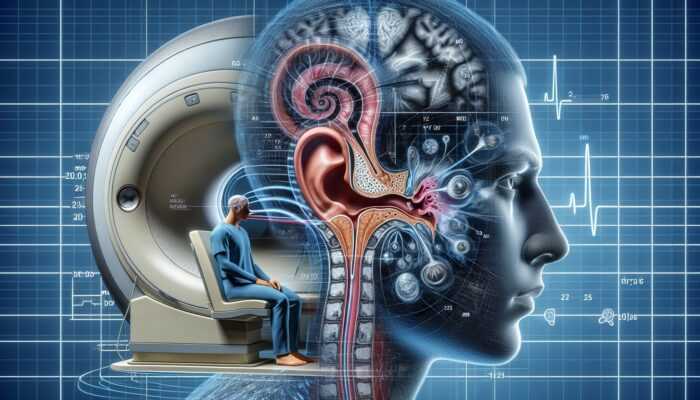
Identifying Common Symptoms Associated with Vertigo
The hallmark symptom of vertigo is a disorienting sensation of spinning or movement, often described as if the surroundings are tilting or swirling around the individual. Alongside this primary sensation, individuals experiencing vertigo may also report additional symptoms such as nausea, vomiting, balance disturbances, and an overarching sense of disorientation. These symptoms can be triggered by specific movements, such as turning the head or changing positions, which complicates everyday activities.
Recognizing these symptoms is crucial for individuals experiencing vertigo so that they can seek appropriate medical assistance. In countries with well-established healthcare systems, such as Canada and Germany, individuals may have immediate access to specialists, whereas those in developing regions may face challenges in obtaining timely diagnosis and treatment. This disparity in healthcare access significantly influences how symptoms are perceived and managed on a global scale.
Furthermore, symptoms of vertigo frequently overlap with those of other medical conditions, complicating the diagnostic process. For example, migraines can present symptoms similar to vertigo, leading to potential confusion for both patients and healthcare providers. Clear communication regarding symptoms, combined with a thorough understanding of individual health histories, can facilitate accurate diagnoses and effective treatment planning.
Essential Diagnostic Tests for Accurate Vertigo Assessment
Diagnosing the underlying causes of vertigo involves a series of specialized tests and evaluations. One of the primary diagnostic tools is the Dix-Hallpike maneuver, which is specifically designed to evaluate BPPV by employing targeted head movements to induce vertigo and observe resulting eye movements. This test is instrumental in differentiating BPPV from other vestibular disorders and is commonly performed in clinics across the globe.
Moreover, electronystagmography (ENG) is frequently employed to assess inner ear function and eye movements, providing critical insights into the integrity of the vestibular system. In certain cases, MRI scans may be required to exclude more severe conditions, such as tumors or structural abnormalities affecting the inner ear.
The availability and accessibility of these diagnostic tools can vary significantly across different regions. Advanced medical facilities in urban areas may offer a comprehensive suite of vestibular testing, while patients in remote or underserved regions may rely on general practitioners for initial evaluations. This gap in healthcare access highlights the importance of empowering individuals with knowledge about these diagnostic techniques, enabling them to advocate for their health and seek appropriate care.
Importance of Differential Diagnosis in Vertigo Management
Effectively distinguishing vertigo from other medical conditions is essential for developing appropriate treatment strategies. A variety of conditions can mimic vertigo symptoms, including migraines, transient ischemic attacks (TIAs), and anxiety disorders. Each of these conditions presents unique challenges and may necessitate specific treatment approaches, emphasizing the critical need for a thorough differential diagnosis.
For example, a patient experiencing migraine-associated vertigo might require different management strategies compared to someone diagnosed with vestibular neuritis. Achieving diagnostic accuracy relies on healthcare providers implementing a comprehensive evaluation strategy, which includes detailed patient history, symptom assessment, and relevant diagnostic tests.
Global health disparities significantly affect the quality of differential diagnoses. In high-resource countries, access to specialists and advanced imaging techniques typically leads to quicker and more accurate diagnoses. However, in low-resource settings, clinicians may depend more heavily on clinical judgment, potentially resulting in misdiagnosis and delayed treatments. Thus, enhancing awareness and education surrounding these conditions is vital for improving patient outcomes on a worldwide scale.
Comprehensive Treatment Options for Vertigo Management
Medications to Alleviate Vertigo Symptoms
The management of vertigo frequently commences with the administration of medications aimed at alleviating symptoms and enhancing the patient’s quality of life. A range of medication classes is available, including antihistamines, which are effective in reducing dizziness and nausea associated with vertigo. Medications such as meclizine and dimenhydrinate are commonly prescribed to help manage acute episodes, providing patients with immediate relief.
In scenarios where vertigo is accompanied by nausea or vomiting, antiemetic medications like ondansetron may be utilized. These medications not only improve the patient’s overall comfort but also facilitate a quicker return to normal activities.
Beyond these immediate relief options, healthcare providers must consider long-term management strategies, particularly for chronic conditions such as Meniere’s disease. In these cases, medications designed to reduce fluid retention, such as diuretics, may be prescribed to help mitigate the frequency and intensity of vertigo attacks.
Access to these medications can vary significantly around the world, influenced by local healthcare systems and pharmaceutical availability. In developed nations, patients often have immediate access to a range of treatment options, while those in underserved regions may face difficulties in obtaining necessary medications. Addressing this gap in accessibility is essential for improving the management of vertigo globally.
Benefits of Vestibular Rehabilitation Therapy
Vestibular Rehabilitation Therapy (VRT) is a specialized form of physical therapy tailored to assist individuals coping with balance disorders, including those experiencing vertigo. Through a series of personalized exercises and maneuvers, VRT aims to enhance balance, reduce dizziness, and improve overall functional abilities.
Patients engage in targeted movements designed to stimulate the vestibular system, retraining the body to adapt to signals from the inner ear. For instance, balance exercises may be introduced to help patients regain confidence in their stability, while habituation exercises can diminish sensitivity to movements that trigger vertigo.
Globally, the implementation of VRT varies, with numerous countries acknowledging its efficacy and integrating it into rehabilitation programs. In regions with advanced healthcare systems, VRT is often part of a multidisciplinary treatment approach to vertigo, involving collaboration among audiologists, neurologists, and physical therapists to deliver comprehensive care. Conversely, areas with limited resources may restrict access to trained therapists, highlighting the need for enhanced training programs and resources to improve patient outcomes.
Moreover, raising public awareness of VRT can empower individuals to seek intervention sooner, ultimately leading to better management of vertigo symptoms and an improved quality of life.
Evaluating Surgical Interventions for Severe Cases
In instances of severe vertigo, particularly when conservative treatments have proven ineffective, surgical interventions may be considered. Procedures such as endolymphatic sac decompression aim to alleviate pressure resulting from fluid accumulation in the inner ear, especially in patients with Meniere’s disease. This surgical option can provide considerable relief from vertigo and enhance hearing capabilities for some individuals.
While surgical interventions are effective, they are typically reserved for situations where an individual’s quality of life is significantly compromised. The decision to pursue surgery should be made collaboratively between the patient and their healthcare team, weighing the potential risks and benefits involved.
Variability in the availability of surgical options can greatly influence global practices. In countries with advanced healthcare systems, such as the United States or Germany, patients may have greater access to expert surgeons and innovative techniques. In contrast, individuals in less developed regions may lack the necessary surgical facilities to perform these interventions, underscoring the need for equitable healthcare access worldwide.
Overall, comprehending the role of surgical options in managing vertigo offers a comprehensive view of treatment possibilities, enabling patients to make informed decisions regarding their care.
Implementing Lifestyle and Dietary Adjustments for Vertigo Management
In addition to medical interventions, lifestyle and dietary modifications are paramount in managing vertigo symptoms. Numerous individuals discover that adjusting their diet can significantly decrease the frequency and intensity of vertigo episodes. For instance, reducing salt intake may help alleviate fluid retention in the inner ear, which is especially advantageous for those diagnosed with Meniere’s disease.
Avoiding caffeine and alcohol is also recommended, as these substances can worsen vertigo symptoms for certain individuals. Encouraging a balanced diet rich in fruits, vegetables, and whole grains supports overall health and may contribute to enhanced ear function.
Stress management techniques, such as mindfulness meditation and yoga, can also serve as valuable tools for individuals coping with vertigo. Research indicates that stress can trigger or exacerbate vertigo episodes, making it crucial to incorporate relaxation techniques into daily life.
Globally, access to education and resources regarding lifestyle modifications can vary. In developed countries, public health campaigns may emphasize awareness of dietary impacts on health, while in other regions, this information may not be as readily accessible. Promoting education on the significance of lifestyle changes can empower individuals to take charge of their health and manage their vertigo symptoms more effectively.
Making Lifestyle Adjustments to Manage Vertigo Effectively
Incorporating Dietary Changes for Improved Health
Implementing dietary changes can play a crucial role in managing vertigo symptoms effectively. Reducing salt intake is particularly significant for individuals diagnosed with Meniere’s disease, as high sodium levels can lead to increased fluid retention in the inner ear. Following a low-sodium diet may help diminish the frequency of vertigo attacks and enhance overall quality of life.
Moreover, avoiding caffeine and alcohol is advisable for those experiencing vertigo, as these substances can provoke symptoms or heighten anxiety, further intensifying feelings of dizziness. Substituting caffeinated beverages with herbal teas or water can promote hydration and overall wellness.
Incorporating a balanced diet abundant in essential nutrients is vital for maintaining ear health. Foods rich in antioxidants, such as berries and leafy greens, can support the body’s overall functions, including those of the inner ear. Encouraging individuals to explore diverse culinary traditions can make dietary adjustments more appealing and culturally relevant.
Education regarding the impact of diet on inner ear health should be a global priority. Health professionals can significantly contribute by providing guidance and resources, especially in regions where access to nutritional information may be limited. By advocating for healthy eating habits, individuals can gain control over their vertigo symptoms and enhance their overall health.
Effective Stress Management Techniques for Vertigo Relief
Stress can significantly exacerbate symptoms of vertigo, making effective stress management strategies essential for individuals affected by this condition. Techniques such as mindfulness meditation, yoga, and regular physical activity can dramatically lower stress levels and improve overall well-being.
Mindfulness practices encourage individuals to concentrate on the present moment, which can help alleviate anxiety and reduce the likelihood of stress-induced vertigo. Yoga, with its combination of physical postures and breathing techniques, promotes relaxation, flexibility, and balance, yielding both physical and mental health benefits.
Access to stress management resources can vary widely across the globe, impacting individuals’ ability to cope with vertigo. In urban areas with wellness centers or community programs, access to classes and workshops may be readily available, while individuals in rural locations might face significant gaps in resources. Thus, promoting online resources, virtual classes, and community outreach initiatives can bridge the divide and ensure that everyone has the opportunity to learn effective stress management techniques.
By prioritizing stress reduction, individuals can cultivate a more balanced lifestyle that not only addresses vertigo symptoms but also enhances overall quality of life, enabling them to engage more fully in social and professional activities.
Optimizing Sleep and Activity for Better Vertigo Management
Adequate sleep is a fundamental component of managing vertigo symptoms, as fatigue can exacerbate feelings of dizziness and disorientation. Establishing a consistent sleep routine, prioritizing restful environments, and addressing any sleep disorders can contribute to better management of vertigo. Creating an optimal sleep setting—dark, quiet, and cool—can facilitate deeper, more restorative sleep, which is essential for overall health.
Additionally, individuals should strive to avoid sudden head movements that can trigger vertigo episodes. Implementing gradual transitions when moving from lying down to sitting or standing can help minimize symptoms. Incorporating gentle balance exercises into daily routines can also enhance stability and reduce the risk of falls, which is crucial for individuals susceptible to vertigo.
Recognizing the importance of sleep and activity modifications in managing vertigo is vital for individuals worldwide. In cultures where work-related stress and long hours contribute to sleep deprivation, promoting healthy sleep habits can have a significantly positive impact on overall health outcomes.
Communities and health organizations can play a pivotal role in raising awareness about the significance of sleep and balance in maintaining well-being, ultimately contributing to improved health outcomes for those affected by vertigo.
Understanding the Impact of Vertigo on Daily Life
Assessing the Effects of Vertigo on Work and Productivity
The effects of vertigo extend beyond the individual, influencing professional environments and overall productivity. People who experience frequent episodes of vertigo may find it challenging to maintain consistent attendance at work or meet job responsibilities, leading to increased stress and anxiety surrounding job performance.
In occupations that demand high levels of concentration and physical coordination, such as construction or healthcare, the presence of vertigo can introduce safety risks not only for the affected individual but also for their colleagues. Employers must acknowledge these challenges and consider accommodations, such as flexible work schedules or ergonomic adjustments, to support employees grappling with vertigo.
Modifying workplace environments to cater to those with vestibular disorders can enhance both productivity and employee morale. For instance, establishing quiet zones for employees to take breaks or implementing policies that allow for remote work on days when symptoms are particularly pronounced can foster a supportive workplace culture.
Globally, workplaces are increasingly recognizing the necessity for inclusivity and awareness of chronic conditions, including vertigo. Training programs aimed at management that educate them about the impacts of vestibular disorders can promote a more supportive work environment, enabling individuals to thrive despite their challenges.
Impact on Driving and Transportation Accessibility
For many individuals, vertigo can severely impair their ability to drive safely, creating obstacles in daily transportation and mobility. The sensation of spinning or dizziness can hinder focus on the road, thus increasing the risk of accidents.
As a result, alternative transportation methods become essential for those experiencing vertigo. Utilizing public transport, ridesharing services, or relying on friends or family for assistance can help individuals navigate their daily activities safely. However, the availability and accessibility of these alternatives can vary significantly by region, impacting individuals’ independence and quality of life.
In urban environments where public transportation is readily accessible, individuals may find it easier to adapt their travel plans. Conversely, in rural areas with limited transportation options, the challenges of managing vertigo can be more pronounced. Advocacy for enhanced transportation services, particularly for individuals with disabilities, can improve access and mobility for those affected by vertigo globally.
Public awareness campaigns can also emphasize the importance of recognizing when driving may be unsafe, promoting safer practices and encouraging individuals to prioritize their health and well-being over societal expectations.
Addressing the Social and Recreational Impact of Vertigo
The repercussions of vertigo on social and recreational activities can be significant, often leading to feelings of isolation and diminished quality of life. Individuals may hesitate to participate in gatherings or events due to the fear of experiencing vertigo episodes, which can create a sense of separation from friends and family.
Engaging in physical activities and social events is vital for mental and emotional well-being; however, vertigo can present barriers to participation. Communities must work collaboratively to create inclusive and supportive environments that allow individuals to engage in social activities safely. This could involve organizing low-pressure social events, providing restful spaces, or offering alternative activity options that accommodate varying mobility levels.
Culturally, attitudes towards chronic health issues can shape the experiences of those living with vertigo. In certain cultures, stigma surrounding health conditions may further exacerbate feelings of isolation. Promoting open discussions about vestibular disorders can help normalize these experiences and foster understanding, ultimately leading to more inclusive social environments.
By prioritizing awareness, communities can assist individuals with vertigo in regaining confidence and re-engaging in social and recreational activities, thereby enhancing their overall quality of life.
Effective Prevention Strategies for Vertigo Management
Prioritizing Regular Health Check-ups for Early Detection
Routine health check-ups are essential for preventing conditions that may lead to vertigo. Regular consultations with healthcare professionals can aid in the early identification of vestibular disorders, allowing for timely interventions and proactive management.
Individuals with a history of ear infections, migraines, or other factors that may predispose them to vertigo should prioritize regular check-ups. In high-resource countries, the emphasis on preventative care often results in improved health outcomes. Conversely, individuals in underserved areas may lack access to routine medical care, highlighting the need for increased health education and resources globally.
Encouraging individuals to recognize the importance of routine check-ups can empower them to take charge of their health. Community initiatives that promote awareness of vestibular health can cultivate a culture of preventative care, ultimately reducing the incidence of vertigo-related complications.
Utilizing Ear Protection in Noisy Environments
Using ear protection in environments with excessive noise is vital for safeguarding inner ear health and preventing conditions that may lead to vertigo. Prolonged exposure to loud noises can damage the delicate structures of the inner ear, increasing the risk of hearing loss and vestibular disorders.
Individuals working in loud settings, such as construction or manufacturing, should prioritize the use of earplugs or earmuffs to minimize their exposure to harmful noise levels. Furthermore, public awareness campaigns can educate communities about the risks associated with noise pollution and the significance of ear protection in preventing long-term damage.
Globally, access to ear protection varies; in some areas, it may be readily available and promoted, while in others, individuals may lack access to essential protective gear. Bridging this gap is essential to ensure that individuals worldwide can take proactive measures to safeguard their ear health and reduce the likelihood of developing vertigo.
Emphasizing Hydration and Nutrition for Optimal Health
Maintaining proper hydration and nutrition is fundamental for overall health and can contribute to preventing vertigo episodes. Dehydration can exacerbate feelings of dizziness, making it crucial for individuals to prioritize adequate fluid intake, particularly in hot climates or during physical exertion.
A balanced diet that includes essential vitamins and minerals supports inner ear function and overall health. Foods rich in magnesium, such as leafy greens and nuts, have been shown to be particularly beneficial for individuals experiencing vestibular disorders.
Promoting education around hydration and nutrition on a global scale can enhance awareness of their critical roles in preventing vertigo. Community initiatives that encourage healthy eating habits and accessible hydration options can empower individuals to take control of their health and mitigate the frequency of vertigo episodes.
Implementing Stress Management Techniques to Reduce Triggers
Employing effective stress management techniques is essential for preventing vertigo episodes, especially for individuals susceptible to stress-related triggers. Incorporating practices such as mindfulness, deep breathing exercises, and regular physical activity can significantly alleviate tension and promote relaxation.
Global disparities in access to stress management resources can influence how individuals manage stress and its effects on their health. In areas where wellness programs and community support are readily available, individuals may find it easier to access resources that promote mental and emotional well-being. Conversely, those in underserved regions may encounter barriers to receiving necessary support.
By raising awareness about stress management techniques and providing access to resources, communities can help individuals lower their stress levels and, consequently, reduce the likelihood of experiencing vertigo episodes. Cultivating a culture of support and understanding can significantly enhance the overall quality of life for individuals living with vertigo.
Adopting Effective Coping Mechanisms for Living with Vertigo
Finding Community Support through Support Groups
Joining support groups can offer individuals living with vertigo a vital sense of community and understanding. These groups provide a platform for sharing personal experiences, exchanging coping strategies, and gaining insights into effective management of vertigo.
Support groups can take various forms, both in-person and virtual, accommodating individuals from diverse backgrounds and geographic locations. The ability to connect with others who understand the challenges of living with vertigo fosters a sense of acceptance and diminishes feelings of isolation.
On a global scale, the availability of support groups varies widely, with some regions offering robust networks while others may lack resources. Health organizations and community centers can play a crucial role in establishing and promoting these groups, ensuring individuals have access to emotional support and practical advice.
Encouraging participation in support groups empowers individuals to embrace their experiences and gain valuable insights, ultimately leading to improved management of their vertigo symptoms.
Accessing Mental Health Support for Emotional Well-being
Addressing the psychological impact of living with vertigo is essential for enhancing overall well-being. Many individuals may grapple with anxiety, depression, or feelings of frustration due to the unpredictable nature of their symptoms. Seeking mental health support through counseling or therapy can provide valuable coping mechanisms and emotional relief.
Therapists can assist individuals in exploring the psychological aspects of their condition and developing strategies to manage anxiety related to vertigo. Cognitive-behavioral therapy (CBT) is particularly effective for addressing anxiety and can be customized to focus on the unique challenges posed by vestibular disorders.
Globally, access to mental health resources can vary significantly, with some regions prioritizing mental health care while others may lack essential services. Advocacy for increased awareness and funding for mental health support is crucial to ensure that individuals living with vertigo have access to the care they need.
By emphasizing the importance of mental health support, communities can foster a more comprehensive approach to managing vertigo, ultimately leading to improved quality of life for those affected.
Incorporating Relaxation Techniques for Stress Relief
Practicing relaxation techniques can provide substantial benefits for individuals experiencing vertigo by reducing stress and fostering a sense of calm. Techniques such as deep breathing exercises, progressive muscle relaxation, and guided imagery can help individuals facilitate relaxation and alleviate anxiety related to vertigo symptoms.
Integrating these techniques into daily routines can empower individuals to take charge of their well-being. Resources such as mobile apps or online videos can offer easy access to relaxation exercises, making them more accessible to individuals globally.
Promoting the use of relaxation techniques should be a global priority, particularly in cultures where stress and anxiety are prevalent. Encouraging individuals to prioritize their mental well-being through relaxation practices can contribute to improved overall health outcomes and enhance coping strategies for managing vertigo.
Frequently Asked Questions about Vertigo
What exactly is vertigo?
Vertigo is characterized by a sensation of spinning or dizziness that arises when there is a conflict between sensory signals from the inner ear, eyes, and body. It is frequently a symptom of an underlying disorder affecting the vestibular system.
What are the primary causes of vertigo?
Vertigo can stem from various conditions, including vestibular disorders like Meniere’s disease, Benign Paroxysmal Positional Vertigo (BPPV), labyrinthitis, and vestibular neuritis. Each of these conditions impacts the inner ear in distinct ways.
How is vertigo diagnosed accurately?
Diagnosing vertigo typically involves a thorough patient history, symptom assessment, and specific tests such as the Dix-Hallpike maneuver, electronystagmography, and MRI scans to identify the underlying cause.
What are the most common symptoms associated with vertigo?
Common symptoms of vertigo include dizziness, a sensation of spinning, nausea, balance issues, and sometimes hearing loss. The severity and duration of these symptoms can vary based on the underlying cause.
What treatment options are available for managing vertigo?
Treatment strategies for vertigo may encompass medications, vestibular rehabilitation therapy, lifestyle and dietary modifications, and in severe cases, surgical interventions. The approach taken often depends on the underlying cause.
Can lifestyle changes play a role in managing vertigo?
Absolutely, lifestyle changes such as dietary adjustments, stress management techniques, and regular exercise can significantly aid in managing vertigo symptoms and enhancing overall well-being.
Is vertigo considered a serious condition?
While vertigo itself is typically not life-threatening, it can greatly affect an individual’s quality of life and safety. Identifying and addressing the underlying cause is crucial for effective management.
How can I prevent vertigo episodes from occurring?
Preventing vertigo episodes may involve regular health check-ups, maintaining proper hydration, using ear protection in noisy environments, and adopting stress management techniques.
Are there support groups available for individuals with vertigo?
Yes, numerous support groups exist for individuals experiencing vertigo. These groups provide a space for sharing experiences, offering advice, and connecting with others who understand the challenges of living with vertigo.
Can chronic vertigo lead to other health complications?
Chronic vertigo can result in complications such as anxiety, depression, and diminished quality of life. Effective management and treatment are essential for minimizing these risks.
Explore our journey on X!
The post Vertigo from Inner Ear Issues: A Complete Guide appeared first on The Microsuction Ear Wax Removal Network.
